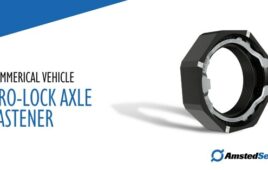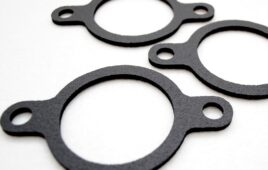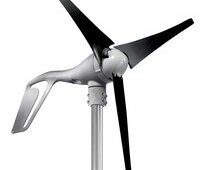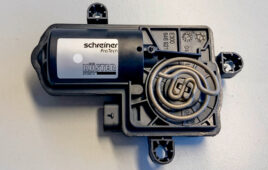 Radial shaft seals for roller bearings in steel plants, for example those used for work rolls, are replaced after 8,000 operating hours, at the longest. Until then, they are expected to function smoothly and reliably under harsh conditions and at high temperatures. They are also expected to protect the bearing internally against excessive water penetration, offer a self-retaining fit in the housing and facilitate easy assembly and repairs.
Radial shaft seals for roller bearings in steel plants, for example those used for work rolls, are replaced after 8,000 operating hours, at the longest. Until then, they are expected to function smoothly and reliably under harsh conditions and at high temperatures. They are also expected to protect the bearing internally against excessive water penetration, offer a self-retaining fit in the housing and facilitate easy assembly and repairs.
However, these requirements cannot be achieved cost-effectively with existing seal designs and production processes. That’s why Freudenberg-NOK developed the Merkel Radiamatic RPM 41 radial shaft seal.
In radial shaft seals, springs are traditionally used as pre-tensioning elements at the seal lip because the existing elastomer materials fatigue too quickly to produce a sufficiently high pretension force over long periods. The Merkel RPM 41 radial shaft seal relies upon a springless seal lip design made from a special elastomer material with a very low compression set. The design was developed to create high material elasticity without affecting properties such as high wear resistance and joining strength. The newly developed elastomer material walks this tightrope successfully.
The Merkel Radiamatic RPM 41 radial shaft seal eliminates metal cages as the typical retaining element in the installation space. These metal cages are difficult to install and remove, creating the risk of damaging the housing. Pure elastomer or rubber/fabric designs are not suited to the self-retaining function of the seal. Freudenberg-NOK conducted a series of tests and Finite Element Method (FEM) analyses to come up with an alternative: a steel element that is placed inside the static rubber part of the seal during the vulcanization process. The technology eliminates exterior metal parts which can corrode.
Another challenge Freudenberg-NOK had to overcome was ensuring rapid availability of unique seal sizes, since the company must be able to supply shaft seal rings on demand – within 24 hours if necessary – at the same cost as alternatives. For precision joints, special devices were developed to bind high-quality intersections together so that they are perfectly aligned with one another. The intersections of the interior metal core, in particular, have to be aligned precisely so that the required pressure in the radial direction is maintained for the ring’s self-retaining capacity. The requirement for this is the constant position of the steel core inside the seal’s adhering piece during vulcanization.
Freudenberg-NOK





Tell Us What You Think!